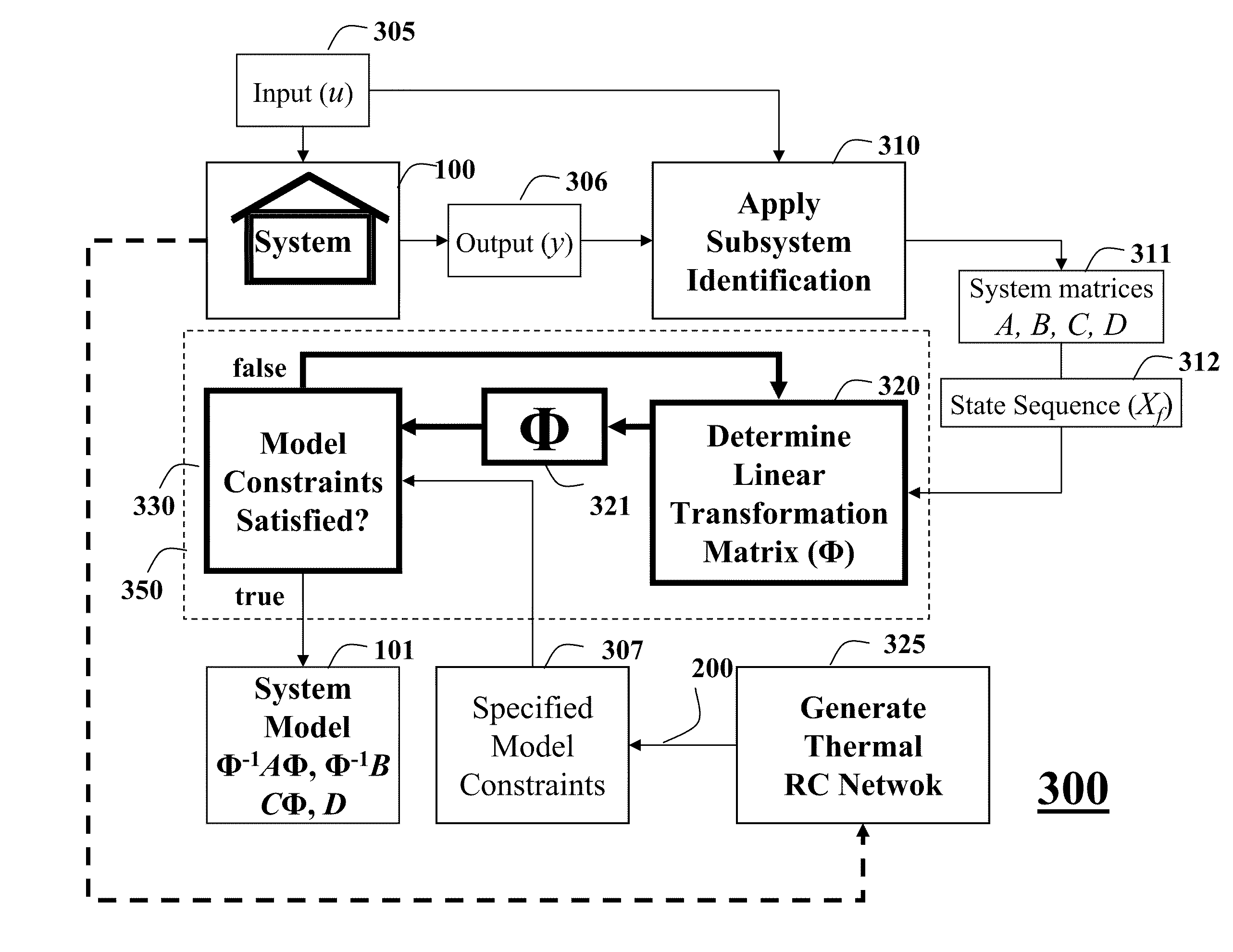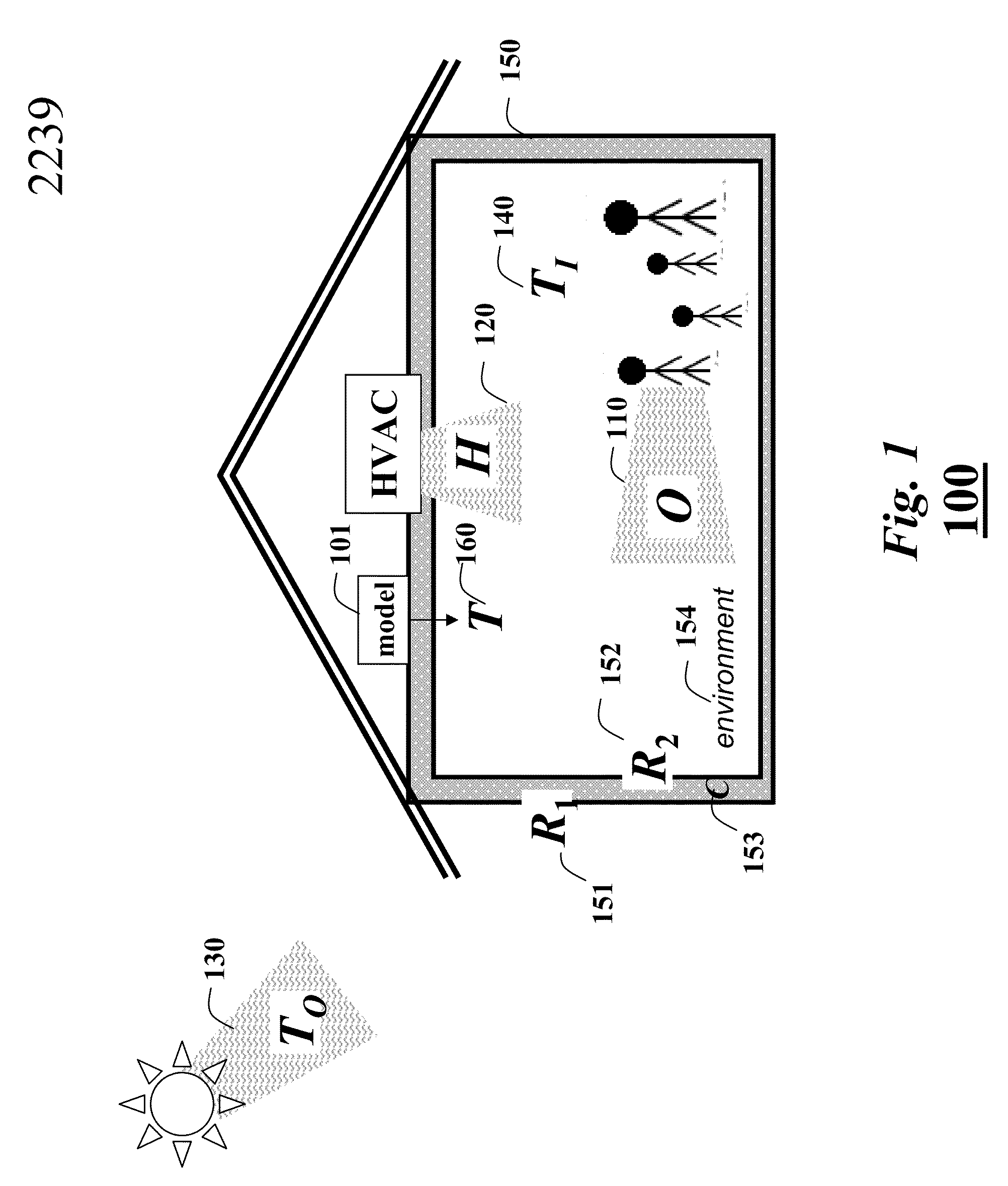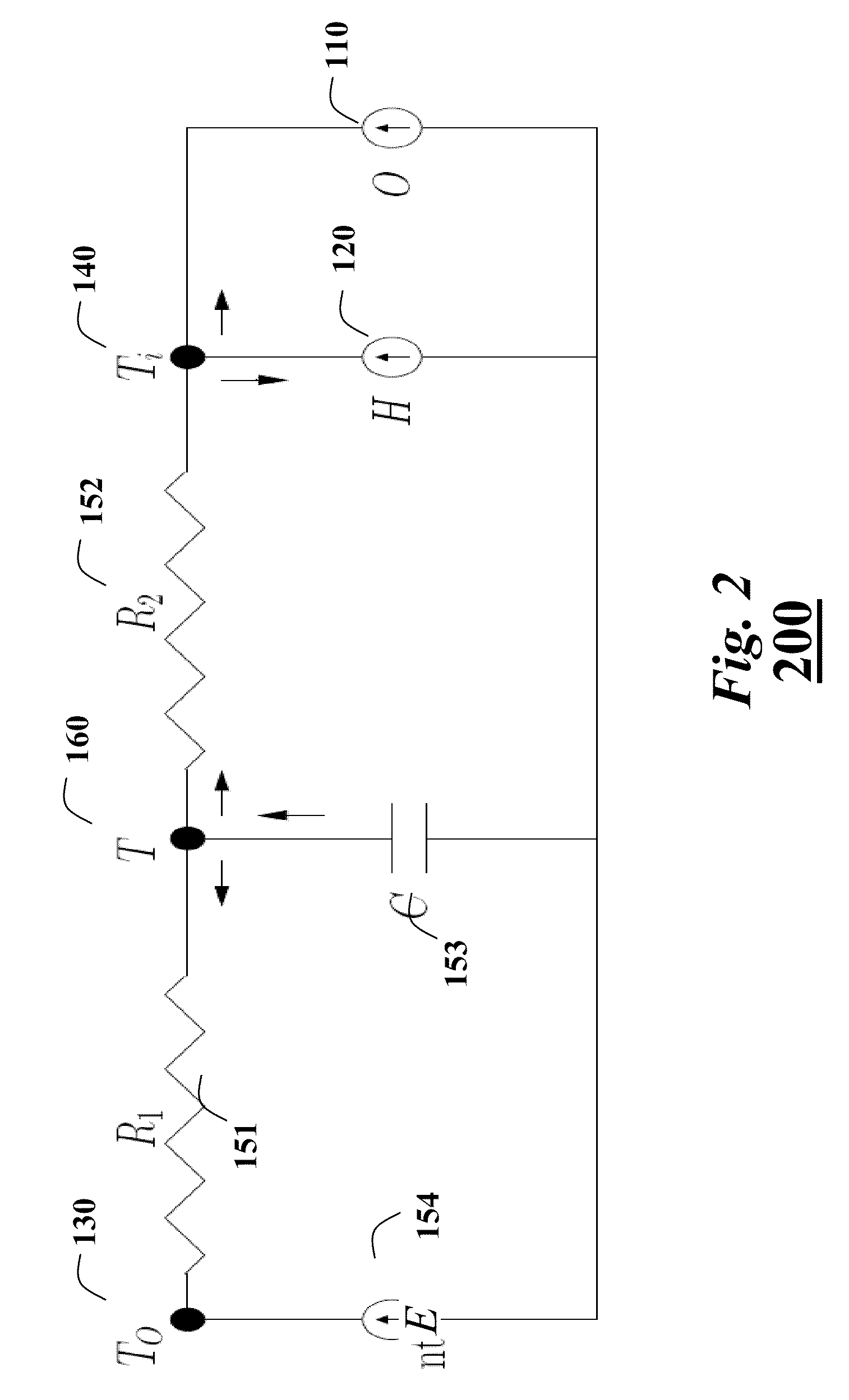Method for Constructing a Gray-Box Model of a System Using Subspace System Identification
a subspace system and gray box technology, applied in the field of system modeling, can solve the problems of inability to obtain in reasonable time, inability to understand the model, and inability to always find information, so as to reduce the dependence of system identification tasks, reduce complexity, and reduce the effect of compromising performan
- Summary
- Abstract
- Description
- Claims
- Application Information
AI Technical Summary
Benefits of technology
Problems solved by technology
Method used
Image
Examples
Embodiment Construction
[0023]FIG. 1 shows a system 100 to be modeled according to embodiments of our invention. In an example application, the system is a building. We desired to model 101 heat transfer in the building.
[0024]The sources of heat for the inside of the building include the environment 154 (appliances, equipment, etc), occupant heat (O) 110, heating, ventilation and air conditioning (HVAC) (H) 120, solar radiation and outside environment heat (TO) 130. Occupancy statistics (location, density, and time) can also be provided. The temperature inside the building is TI 140.
[0025]System Constraints
[0026]A resistance R1 151 models thermal transfer between an outside surface of a wall 150 and the outside environment, and a resistance R2 152 models the transfer between the inside surface of the wall and inside environment. The capacitance C 153 corresponds to the thermal mass of the wall.
[0027]As shown in FIG. 3, the embodiments of the invention provide a method 300 for constructing the thermal model...
PUM
 Login to View More
Login to View More Abstract
Description
Claims
Application Information
 Login to View More
Login to View More - R&D
- Intellectual Property
- Life Sciences
- Materials
- Tech Scout
- Unparalleled Data Quality
- Higher Quality Content
- 60% Fewer Hallucinations
Browse by: Latest US Patents, China's latest patents, Technical Efficacy Thesaurus, Application Domain, Technology Topic, Popular Technical Reports.
© 2025 PatSnap. All rights reserved.Legal|Privacy policy|Modern Slavery Act Transparency Statement|Sitemap|About US| Contact US: help@patsnap.com



